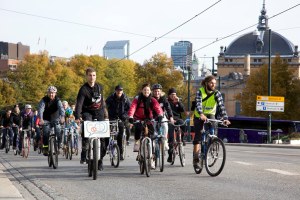Aiming to become 100% fossil fuel free by 2050, Aalborg’s ~220,000 citizens are no strangers to a set of ambitious initiatives. Below, we will explore some of the key aspects that are enabling Denmark’s third largest municipality to transition towards a carbon free future!
The Danish Example – (District) energy efficiency first
a mix of renewable heat and cold sources, including local biomass, wind, solar, heat pumps, waste and geothermal heat, as well as an envisaged total of 40-50% in energy savings is foreseen to bring down emissions from the network in the future. Aalborg network companies are thus required to increase energy savings by approximately 2% in supply annually. While the costs of the conversion are expected to stay in line with those of the current system, additional investments are foreseen to go into energy conservation and increasing efficiency in coming years.
Aalborg network companies are thus required to increase energy savings by approximately 2% in supply annually.
All on board for the green transition
For a fossil free Aalborg 2050, the municipality approaches and promotes its energy transition as an integral part of a wider Sustainability Strategy. Already back in 1994 the city approved the Aalborg Charter during the first Sustainable Cities and Towns conference, as its political framework for sustainable development. By that Aalborg not only prepared the ground for a variety of European movements, such as the Aalborg Commitments and the Sustainable Cities Platform, but also set a trend for its local transition. The current strategy was formulated in close consultation with citizens, civil society, educational institutions, business and industry, with the aim to make sustainability an accepted principle in private, professional and public life of Aalborg’s citizens.
The central point for Aalborg’s cooperation with business and citizens is the Centre for Green Transition created in 2013. The center is an umbrella organisation for sustainability projects and partnerships, supporting initiatives such as a Green Agents program and a Green Shops scheme to embed sustainability in daily life.
Read more >>> HERE




 According to a story in the Norwegian paper
According to a story in the Norwegian paper 